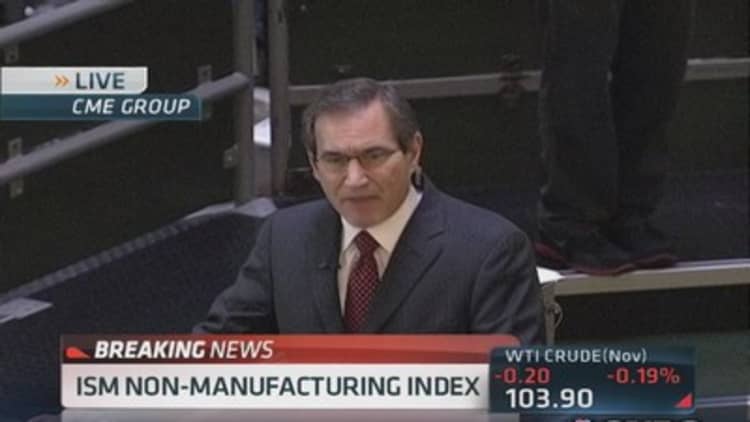The U.S. manufacturing renaissance may have an invisible hand guiding it along: the energy sector, which is in the midst of its own breakneck expansion.
The heavily chronicled shale boom that has propelled U.S. oil production to historical peaks also may be greasing the wheels of manufacturing, which suffered for years as production moved to cheaper havens overseas. Now, however, the once-beleaguered sector is expanding briskly. Last week the Institute for Supply Management reported that manufacturing activity expanded at its fastest pace in 30 months in November.
While ISM does not break out energy-related manufacturing specifically, Brad Holcomb, chairman of its manufacturing business survey committee, said the rise of shale production has definitely had an impact on manufacturing gains "since energy affects everything."
The petroleum and coal industries have expanded each month since June, he added, representing about 10 percent of manufacturing growth.
Meanwhile, research firm IHS, which has analyzed how the U.S. energy boom is helping to create jobs, said that unconventional oil and gas supported 2.1 million jobs and added more than $283 billion to gross domestic product last year.
(Read more: For economy, best of energy surge is yet to come: IHS)
Mohsen Bonakdarpour, director of economic impact analysis at IHS, said that an additional $2.4 trillion of energy-related investment will find its way into gas and boost manufacturing over the next decade.
"The rise in production generates a tremendous amount in operating spending" and is spread out over a range of industries, Bonakdarpour said. "There definitely is a manufacturing story in all of this."
Beneath the surface of the ISM data, anecdotes suggest that the expansion is at least partly linked to the shale phenomenon that has left the world's largest energy consumer awash in shale and natural gas.
Sectors that reported growth in employment and production include petroleum, chemicals, plastics and rubber, the ISM said. Economists have observed that the increase in domestic energy production has helped fuel growth in related "upstream, midstream and downstream" sectors, which use natural gas to make their products.
(Read more: Shale boom may create jobs in nonfracking states: Report)

Bonakdarpur at IHS estimated that 3.2 percent of all manufacturing jobs last year were linked to the U.S. oil and natural gas surge and that the figure could jump to 4.2 percent by 2025.
"That means unconventional development will support close to 400,000 manufacturing jobs by 2015 and 500,000 by 2025," he said.
In a recent research note, Capital Economics tied the U.S. economic recovery, in part, to the energy boom. Since June 2009, a 24 percent surge in oil and gas extraction has coincided with a 47 percent rise in the production of mining machinery and a 58 percent gain in mining support services, the firm noted.
Still, the manufacturing sector is only 11 percent of U.S. GDP—making employment gains negligible in the context of the vast service sector that makes up more than two-thirds of the economy.
However, "we wouldn't dismiss the energy boom as a key economic development," said Paul Dales, senior U.S. economist for Capital Economics. "Over the long run, it will support GDP growth and transform certain parts of the economy. But it's not going to make a major difference over the next year or so."
—By CNBC's Javier E. David


